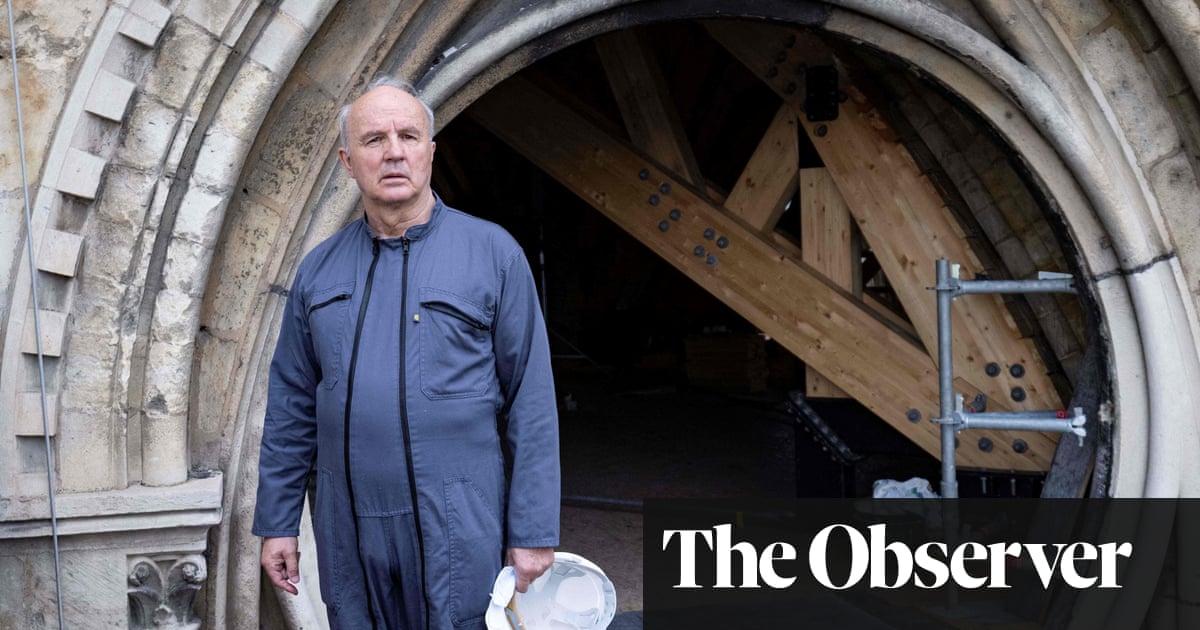
French and Paris authorities are facing further legal action over worrying lead levels around Notre Dame Cathedral in the wake of the devastating fire two years ago.
Lawyers for a branch of one of the country’s most powerful unions, which has joined forced with a health association and local residents, will submit a legal case on Tuesday for “endangering life … by persons unknown”.
The plaintiffs accuse the authorities of “grave negligence”, which they say exposed city dwellers, particularly children and those working to restore the cathedral, to dangerous levels of toxic lead dust.
Notre Dame was severely damaged by fire in April 2019, which melted the roof and spire and sent an estimated 460 tonnes of lead into the air. After the conflagration, lead levels reached up to 500,000 microgrammes per sq metre (µg/m2) in the courtyard outside the edifice and up to 20,000 µg/m2 in the surrounding residential and tourist areas, many times higher than the 5,000 µg/m2 recommended by Paris’s public health authorities.
A simulation by the National Institute for Industrial Environment suggested the lead could have spread to a distance of up to 50km from the cathedral.
The plaintiffs, who include a branch of the CGT union, say insufficient measures were taken to protect workers and nearby residents, as well as children at local schools, in the three months after the fire.
The Henri Pézerat Association, a union that has campaigned on health and environmental issues on behalf of the public and two families living near the cathedral, decided to take legal action after the work inspectorate report pointed out the risk to workers drafted in to clean up the site.
Its lawyer, François Lafforge, said: “Recently we finally obtained the reports from the works inspectorate that showed that measures to protect workers, in particular, were not respected during all the months following the fire.”
Lafforge told France Inter radio requests for information from the authorities had gone unanswered.
In May, immediately after the fire, police and officials said the air around Notre Dame was not toxic. However, in July 2019, the inspectorate told the regional organisation overseeing the clean-up operation that workers at the site were being put at risk.
Among its concerns were that workers had not been issued with masks aimed at protecting them from the risk of inhaling lead dust and they were consequently taking the dust home with them. Testing of 82 local children revealed 10 had led levels above recommended levels.
This led to work being halted for a month when police sealed off the area around the cathedral to allow a 10-day “decontamination” operation to be carried out.
At the time, Annie Thébaud-Mony, the research director at Inserm (national institute for health and medical research), said the lead contamination was worrying.
“We have to realise that the 400 tonnes of lead that were spread corresponds to four times the lead emissions in the whole of France for a year,” she said. “Lead is as bad as asbestos in terms of poison. At the time of the blaze, the firefighters should have been better protected, in my opinion. The same goes for those who began work (on the cathedral).”
The case is the second legal action against the authorities over lead levels. In May, the paved area around Notre Dame was temporarily closed to the public again after high lead levels were detected. It was reopened after being cleaned.
Lafforge said his clients wished to bring to light an issue that presented “a major problem for public health”.
The French president, Emmanuel Macron, has vowed to have the cathedral open again by 2024.












